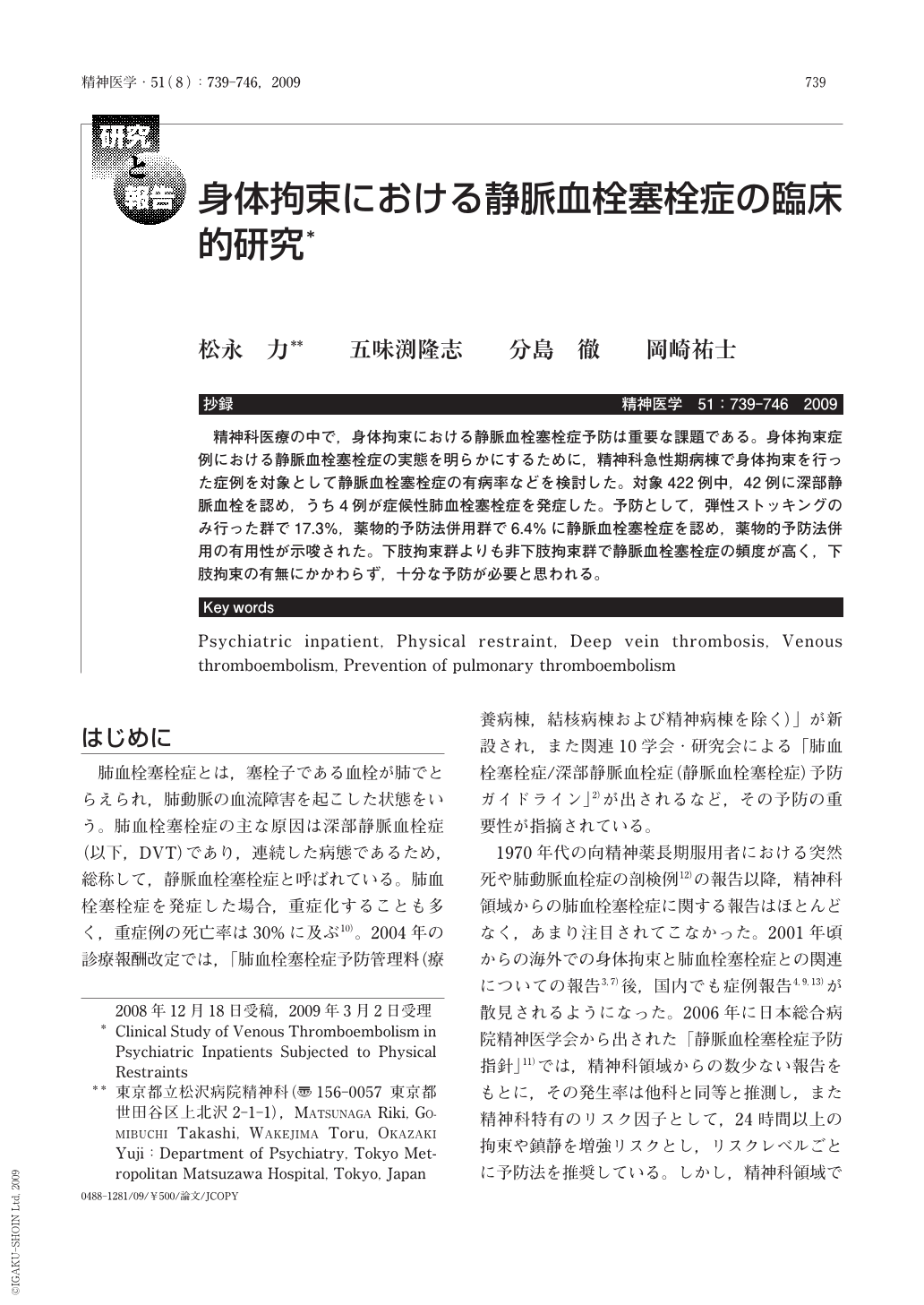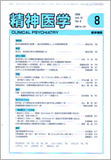Japanese
English
- 有料閲覧
- Abstract 文献概要
- 1ページ目 Look Inside
- 参考文献 Reference
- サイト内被引用 Cited by
抄録
精神科医療の中で,身体拘束における静脈血栓塞栓症予防は重要な課題である。身体拘束症例における静脈血栓塞栓症の実態を明らかにするために,精神科急性期病棟で身体拘束を行った症例を対象として静脈血栓塞栓症の有病率などを検討した。対象422例中,42例に深部静脈血栓を認め,うち4例が症候性肺血栓塞栓症を発症した。予防として,弾性ストッキングのみ行った群で17.3%,薬物的予防法併用群で6.4%に静脈血栓塞栓症を認め,薬物的予防法併用の有用性が示唆された。下肢拘束群よりも非下肢拘束群で静脈血栓塞栓症の頻度が高く,下肢拘束の有無にかかわらず,十分な予防が必要と思われる。
The prevention of pulmonary thromboembolism in psychiatric inpatients with physical restraints is a significant challenge in the clinical field. However, to our knowledge, no study has reported the prevalence and clinical characteristics of venous thromboembolism (VTE) among patients in the psychiatric ward.
Thus, we investigated the prevalence and risk factors of VTE in 422 patients admitted 2 psychiatric units of our hospital after subjecting them to physical restraints. All subjects wore graduated compression stockings (GCS), and 283 patients were administered a low dose unfractionated heparin (5,000 U 12-hourly subcutaneously or 10,000 U daily by continuous intravenous injection) for prophylaxis against VTE.
In total, 42 cases had deep vein thrombosis, which was detected with Doppler ultrasonography or computed tomography. A diagnosis of symptomatic pulmonary thromboembolism was made in 4 patients by performing chest CT or autopsy. The prevalence of VTE was observed to be lower when anticoagulant prophylaxis was provided in combination with GCS than with GCS alone (6.4% vs 17.3%). The rates of VTE were observed to be higher in the group subjected to physical restraints that did not involve the legs than in those subjected to restraints involving them.
The administration of anticoagulants to patients subjected to physical restraints was considered to be effective for prophylaxis against VTE. Further studies are needed to confirm this observation. Moreover, we recommend the administration of adequate thromboprophylaxis with anticoagulants and/or using mechanical methods, such as GCS and intermittent pneumatic compression, with or without leg restraints to patients subjected to physical restraints.

Copyright © 2009, Igaku-Shoin Ltd. All rights reserved.


